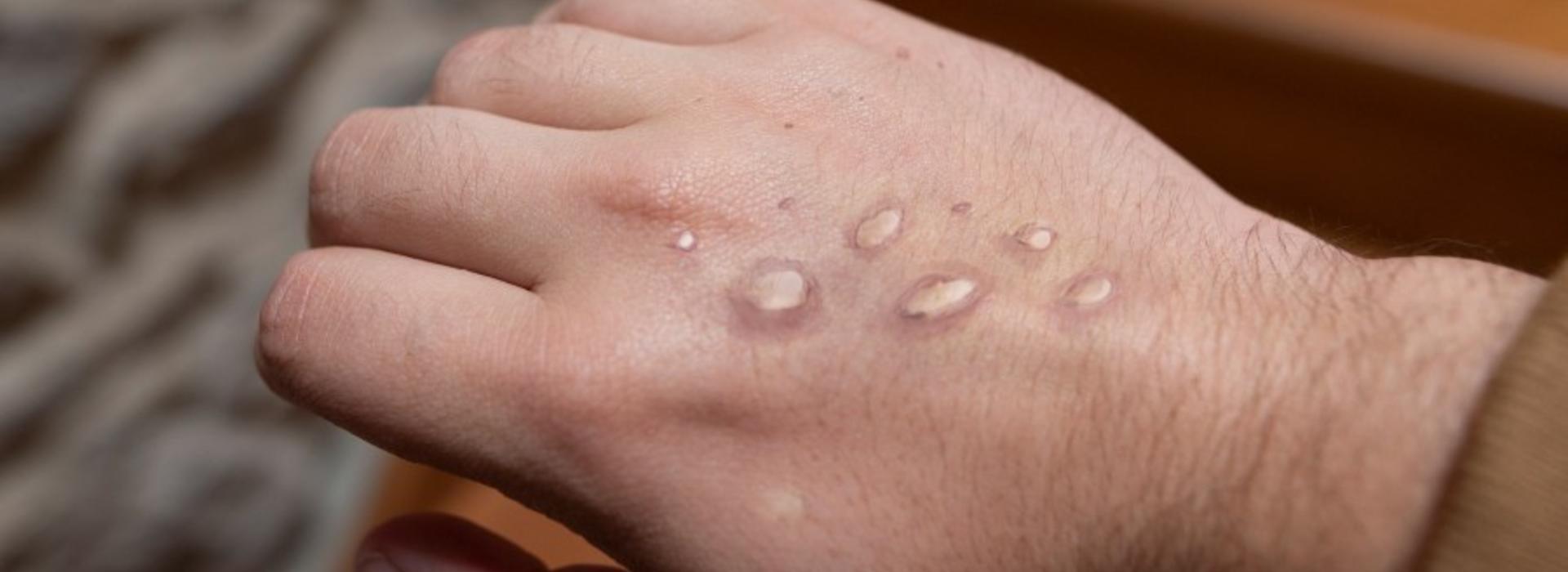
Talking monkeypox with the U of M
MINNEAPOLIS/ST. PAUL (06/30/2022) — Monkeypox has been appearing in the news more and more frequently, which poses the question for many of us — what exactly is it?
Beth Thielen, M.D., Ph.D., with the University of Minnesota Medical School and M Health Fairview, talks about what monkeypox is and how to take preventative measures against it.
Q: What is monkeypox?
Dr. Thielen: Monkeypox is a rare viral disease that historically was linked with living or traveling in West and Central Africa or from contact with animals from this area. The current outbreak is different because cases are being detected in many countries that do not usually have monkeypox. Most of these have been in Europe, but more than 170 cases have been identified in the U.S. The disease causes a mild illness that resolves without specific treatment in most people, but there is a higher risk of severe disease or complications in people who are immunocompromised, pregnant, or very young.
Q: How is monkeypox transferred between people?
Dr. Thielen: The virus, which originated in animals, can be transmitted from person to person by contact with lesions, respiratory droplets, and contaminated materials such as clothing and bedding. With this recent outbreak, there has been particular concern about the virus being spread by sexual contact.
Q: What are the symptoms of monkeypox?
Dr. Thielen: The main symptom of monkeypox is a new rash. The rash typically starts as flat red spots on the skin. Over a few days to a week, the rash progresses to raised bumps and then blisters, first filled with clear fluid and then pus. It can be quite painful. They may occur anywhere on the body, but with the current outbreak, the rash has often begun in mucosal areas such as the mouth or genital area. It may remain limited to a specific body site or spread all over. We used to think that most people with the infection developed systemic symptoms such as fever, malaise, and swollen lymph nodes, but these symptoms are less common with the current outbreak.
Q: What steps can someone take to prevent monkeypox?
Dr. Thielen: The smallpox vaccine has been shown to protect against monkeypox, but the vaccine itself can have serious side effects, particularly among the same people at highest risk from monkeypox — immunocompromised and pregnant people. For that reason, the decision about vaccination should be made on a case-by-case basis after carefully weighing the risks of exposure to the disease. You can help keep yourself and your community healthy by taking precautions that reduce the spread of many infections, not just monkeypox: stay home if you are sick, wear a mask if you are coughing or sneezing, wash your hands with soap and water or use an alcohol-based hand sanitizer frequently and avoid high-risk sexual exposures such as meeting anonymous partners through websites or apps.
Q: What should I do if I think I might have monkeypox?
Dr. Thielen: So far, the number of cases in the United States is quite small, with one diagnosed case in Minnesota. However, it is still important to be vigilant for signs and to contact your healthcare provider if you develop symptoms. Consult a healthcare provider for evaluation and possible testing if you develop a new rash, particularly if you have been around someone who might have monkeypox. Other diseases like chickenpox, herpes, and syphilis can cause rashes that look similar, so testing is important to make sure you get the right treatment.
Beth Thielen, M.D., Ph.D., is an adult and pediatric infectious diseases physician at the U of M Medical School and M Health Fairview. Her research is focused on the molecular epidemiology and viral pathogenesis of human respiratory viral infections. Her clinical interests include clinical immunology, immunocompromised patients, and travel medicine.
-30-
About “Talking...with UMN”
“Talking...with UMN” is a resource whereby University of Minnesota faculty answer questions on current and other topics of general interest. Feel free to republish this content. If would like to schedule an interview with the faculty member or have topics you’d like the University of Minnesota to explore for future “Talking...with UMN,” please contact University Public Relations at unews@umn.edu.
About the University of Minnesota Medical School
The University of Minnesota Medical School is at the forefront of learning and discovery, transforming medical care, and educating the next generation of physicians. Our graduates and faculty produce high-impact biomedical research and advance the practice of medicine. We acknowledge that the U of M Medical School, both the Twin Cities campus and Duluth campus, is located on traditional, ancestral, and contemporary lands of the Dakota and the Ojibwe, and scores of other Indigenous people, and we affirm our commitment to tribal communities and their sovereignty as we seek to improve and strengthen our relations with tribal nations. Learn more at med.umn.edu.